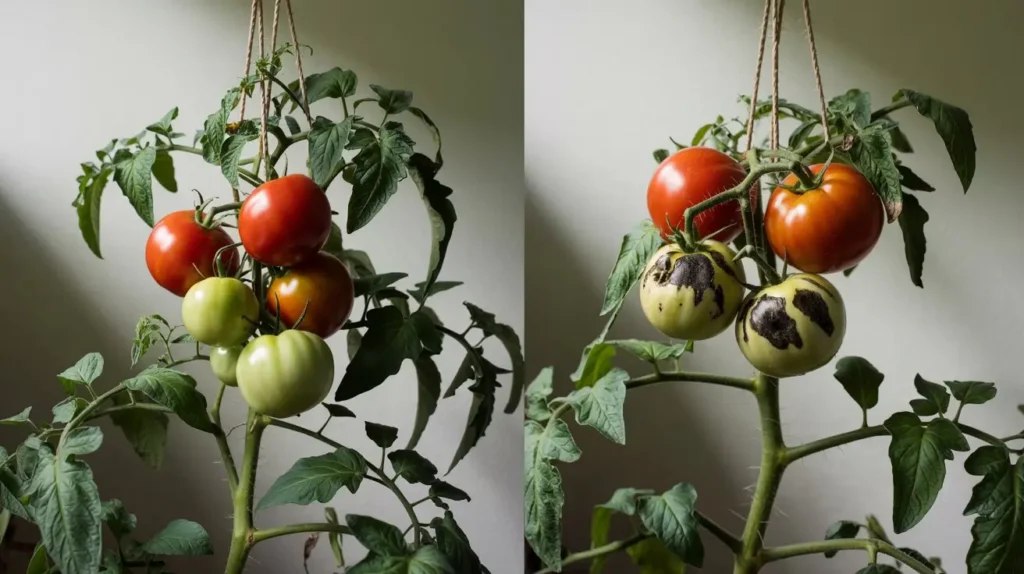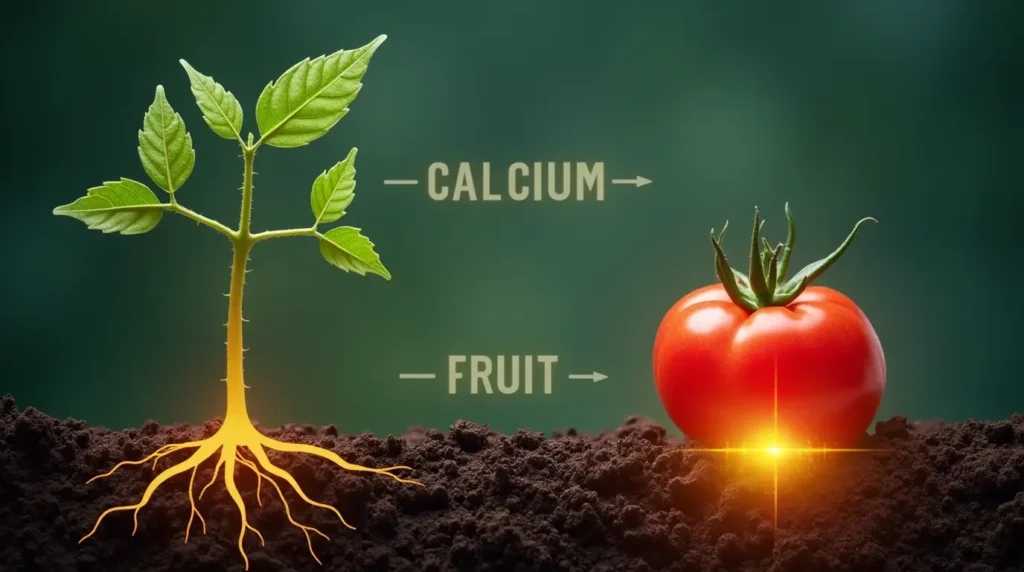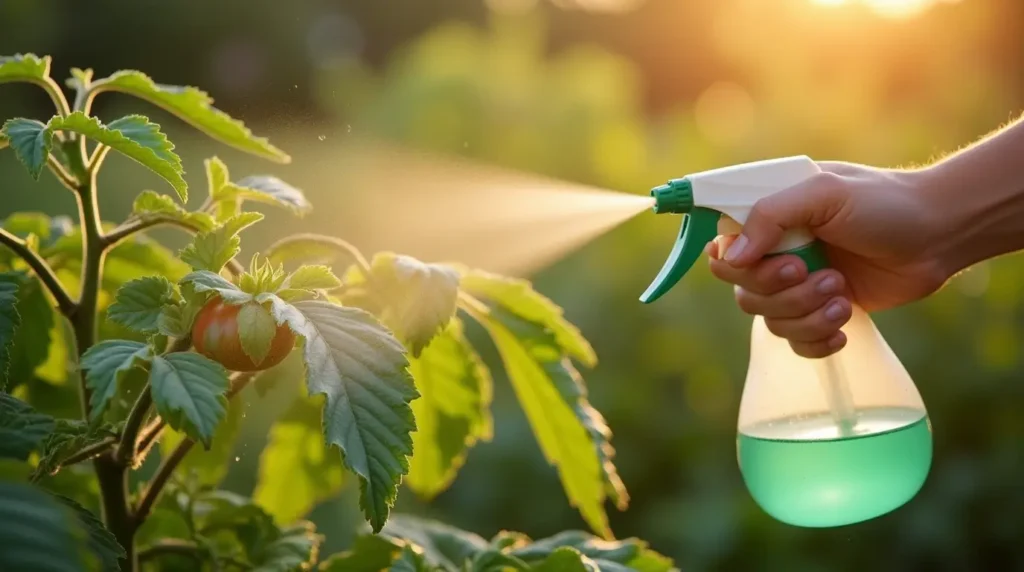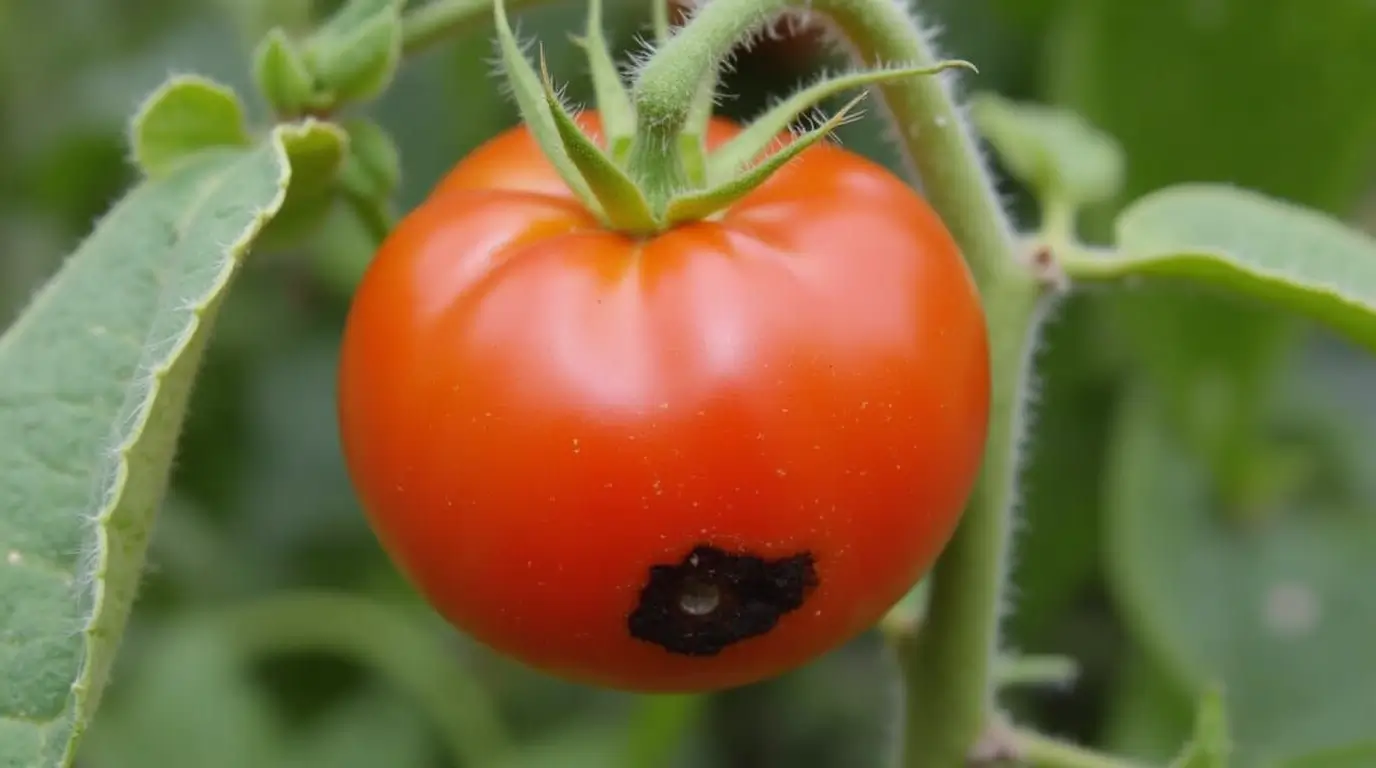Calcium for Tomato Plants: The Forgotten Miracle Nutrient.
You’ve carefully tended your tomato plants for months, watching with pride as the first green fruits begin to swell.
Then disaster strikes – just as they start to ripen, ugly black spots appear on the bottoms. Your heart sinks as you realize blossom end rot has ruined yet another crop.
If this scenario sounds familiar, you’re in good company. Even experienced gardeners face this frustrating problem season after season.
The truth? That disappointing rot isn’t caused by pests or disease, but by something far more basic – a simple nutrient deficiency. What if I told you the solution could be as straightforward as giving your plants more calcium?
Calcium for tomato plants plays such a critical role that it’s often called the “miracle nutrient.” Yet most gardeners focus solely on the big three – nitrogen, phosphorus, and potassium – completely overlooking this essential mineral. The results? Cracked, rotting tomatoes that never reach their full potential.
Here’s the good news: understanding and fixing calcium deficiency is easier than you think. In this guide, we’ll uncover why calcium matters so much for your tomatoes, how to spot deficiency before it ruins your harvest, and the most effective ways to get this vital nutrient to your plants.
By the end, you’ll have all the knowledge needed to grow perfect, blemish-free tomatoes – no more disappointing harvests or mysterious black spots.
Let’s dig into the often-overlooked world of calcium for tomato plants and transform your garden’s productivity.
Why Your Tomato Plants Can’t Thrive Without Calcium

Think of calcium as your tomato plant’s skeletal system. Just as your bones provide structure to your body, calcium builds strong cell walls that:
- Prevent blossom end rot (those frustrating black spots)
- Create firm, juicy tomatoes instead of mushy disappointments
- Help plants stand tall against wind and heavy fruit loads
The Science Behind the Magic
When tomato plants lack sufficient calcium, their cell membranes become weak and porous. A 2018 study in the Journal of Plant Nutrition showed calcium-deficient tomato cells collapse 40% easier than healthy ones. This explains why:
- New growth suffers first – Calcium can’t move from old leaves to new ones
- Fruits develop leathery patches – Cell walls break down during rapid expansion
- Roots struggle to absorb water – Weak membranes impair nutrient transport
Calcium’s Hidden Superpowers

Beyond structural support, calcium for tomato plants:
✓ Activates enzymes that regulate growth hormones
✓ Signals stress responses to heat and drought
✓ Neutralizes toxins produced during metabolism
Pro Tip: Even calcium-rich soils can lead to deficient plants if pH is wrong (aim for 6.2-6.8) or watering is inconsistent. The mineral needs water to move through soil to roots.
“My tomatoes stopped rotting when I started adding calcium at flowering stage instead of waiting for symptoms.” – Marcus, home gardener for 12 years
Is Your Tomato Plant Screaming for Calcium? Here’s How to Tell
Your tomato plants communicate their needs more clearly than you might think. When calcium levels drop too low, they send unmistakable distress signals.
Catching these signs early means the difference between salvaging your crop and watching it rot on the vine.
The Telltale Signs of Calcium Hunger
1. Blossom End Rot: The Classic SOS
- Dark, sunken leathery patches on fruit bottoms
- Starts small (dime-sized) but can cover half the tomato
- Appears just as fruits begin ripening
Why it happens: Weak cell walls collapse during rapid fruit expansion
2. New Growth Goes Haywire
- Young leaves curl inward like tacos
- Emerging leaves appear distorted or stunted
- Leaf tips may turn brown and crispy
3. Structural Weaknesses
- Stems snap easily under mild pressure
- Plants can’t support their own weight
- Branches droop despite adequate water
4. Root System Red Flags
- Sparse, underdeveloped roots (check when transplanting)
- Root tips appear brown or dead
- Poor water uptake (plants wilt quickly in heat)
The Critical Window for Prevention
Calcium deficiency symptoms typically appear:
✔️ 2-3 weeks after fruit set
✔️ During rapid growth spurts
✔️ After heavy rainfall (nutrients get leached away)
Pro Tip: Notice curled leaves? Test your soil pH before adding calcium. Acidic soils (below 6.2) lock up calcium even if it’s physically present.
“I mistook calcium deficiency for overwatering until I saw the telltale black bottoms. Now I add eggshells to every planting hole.” – Sarah, urban gardener
The Best Calcium Sources for Your Tomato Plants – Compared
Not all calcium supplements work the same way. Choosing the right one depends on your soil type, gardening style, and how quickly your plants need help. Here’s a breakdown of the top options:
Calcium Sources Comparison Table
| Source | Pros | Cons | Best For |
|---|---|---|---|
| Calcium Nitrate | ✅ Fast-acting (visible results in days) ✅ Highly water-soluble for foliar sprays | ❌ Synthetic (not organic-friendly) ❌ Risk of salt buildup with overuse | Emergency fixes for active blossom end rot |
| Crushed Eggshells | ✅ Free & sustainable ✅ Improves soil structure long-term | ❌ Takes months to break down ❌ Inconsistent absorption | Preventive care (mix into soil before planting) |
| Gypsum (Calcium Sulfate) | ✅ Won’t alter soil pH ✅ Loosens compacted clay soil | ❌ Slower than liquid options ❌ Less effective in sandy soils | Heavy clay gardens needing drainage improvement |
| Bone Meal | ✅ Organic & slow-release ✅ Adds phosphorus too | ❌ Can attract rodents ❌ Expensive for large gardens | Seedlings and container tomatoes |
| Dolomite Lime | ✅ Raises pH while adding calcium ✅ Long-lasting effects | ❌ Can over-alkalize soil ❌ Contains magnesium (not always needed) | Acidic soils (pH below 6.0) |
How to Choose the Right Source
- Need a quick fix? Calcium nitrate foliar spray (1 tbsp/gallon) works within 48 hours.
- Prefer organic? Bake and grind eggshells into powder for faster breakdown.
- Have dense clay soil? Gypsum improves texture without changing pH.
Pro Tip: “Rotate calcium sources—use fast-acting nitrates for emergencies and eggshells/gypsum for maintenance.” – Commercial tomato grower tip
How to Apply Calcium for Maximum Tomato Success

Getting calcium into your tomato plants matters just as much as choosing the right source. Even nutrient-rich soil won’t help if your plants can’t absorb it. Here’s how to apply calcium the right way, at the right time, for unbeatable results.
Step 1: Prep Your Soil for Calcium Uptake
Before adding anything, test your soil pH (aim for 6.5–6.8). Why?
- Too acidic (pH < 6.0)? Calcium gets chemically locked up.
- Too alkaline (pH > 7.0)? Iron and phosphorus become less available.
Fix it first:
- For acidic soil: Add dolomite lime (raises pH + adds calcium).
- For alkaline soil: Mix in sulfur or peat moss to lower pH.
Step 2: Choose Your Application Method
| Method | Best For | How To Do It |
|---|---|---|
| Foliar Spray | Quick fixes (e.g., active blossom end rot) | Mix 1 tbsp calcium nitrate per gallon of water, spray leaves at dawn/dusk (avoid midday sun). |
| Root Drench | Long-term supply | Dissolve 4 tbsp gypsum or bone meal in 1 gal water, pour at base of plants. |
| Soil Amendment | Preventive care | Mix crushed eggshells or lime into planting holes before transplanting. |
Why foliar sprays work fastest:
- Calcium absorbs directly through leaves (bypasses soil issues).
- Effects show in 24–48 hours for severe deficiencies.
Step 3: Perfect Your Timing
Calcium is most critical during:
✅ Flowering stage (when fruits begin forming)
✅ Early fruiting (as tomatoes expand rapidly)
Avoid:
❌ Applying in extreme heat (causes leaf burn)
❌ Over-spraying (once every 2 weeks is enough)
Pro Tip: “Add calcium to your watering schedule—consistency prevents rot better than emergency fixes.”
Bonus: DIY Calcium Spray Recipe
For organic gardeners:
- Steep 10 crushed eggshells in 1 gal vinegar for 2 days.
- Strain & dilute 1:10 with water.
- Spray leaves weekly during fruiting.
(Works slower than calcium nitrate but improves soil health long-term.)
Tomato Calcium Myths – Busted!
Tomato growers swap advice like seeds at a plant swap, but some “tried-and-true” tips do more harm than good. Let’s debunk two stubborn myths that could be sabotaging your harvest.
Myth #1: “Epsom Salt Cures Blossom End Rot”
(The painful truth: It makes the problem worse.)
🔍 Why this myth persists:
- Epsom salt (magnesium sulfate) looks like it helps because plants green up temporarily.
- Magnesium aids chlorophyll production, but it competes with calcium uptake.
💡 What actually happens:
- Extra magnesium = less calcium absorption
- Temporary leaf greening ≠ fruit protection
- Salt buildup stresses roots
Pro Fix:
✔️ Use calcium nitrate for real results
✔️ Test soil before adding any supplements
Myth #2: “More Lime = Better Tomatoes”
(Over-liming creates nutrient jail.)
⚠️ The calcium paradox:
While tomatoes need calcium, excessive lime:
- Locks up iron, zinc, and manganese
- Causes interveinal chlorosis (yellow leaves with green veins)
- Makes soil too alkaline for optimal growth
📊 Safe Lime Use Guide:
| Soil pH | Action |
|---|---|
| Below 6.0 | Add 1 cup dolomite lime per plant |
| 6.5–6.8 | No lime needed – focus on calcium sources |
| Above 7.0 | Lower pH with sulfur instead |
Bonus Myth: “All Rot Is Calcium-Related”
Sometimes, overwatering or fungal issues mimic blossom end rot. Check:
- Is the spot black and sunken? → Likely calcium
- Is it mushy with white fuzz? → Likely fungal
One Test:
Calcium-deficient tomatoes won’t improve after picking, while fungal rot keeps spreading.
“I wasted years sprinkling Epsom salt before learning it was starving my plants of calcium.” – Regretful gardener confession
FAQs About Calcium for Tomato Plants
Q: Can I use milk for calcium?
A: Yes—diluted milk sprays work, but they’re less efficient than targeted solutions.
Q: How often should I apply calcium?
A: Every 2–3 weeks during fruiting, or as needed based on soil tests.
Conclusion
Calcium isn’t just a nutrient—it’s your tomatoes’ armor against rot. Test your soil, pick your calcium source, and say goodbye to mushy tomatoes for good.
Want More Plant Tips? Follow Us!
🌿 YouTube: Watch detailed plant care tutorials.
📌 Pinterest: Discover stunning plant decor ideas.
🎥 TikTok: Get quick and fun plant hacks.
Join our plant-loving community today!”

